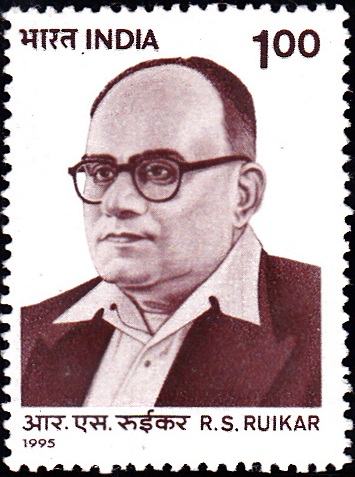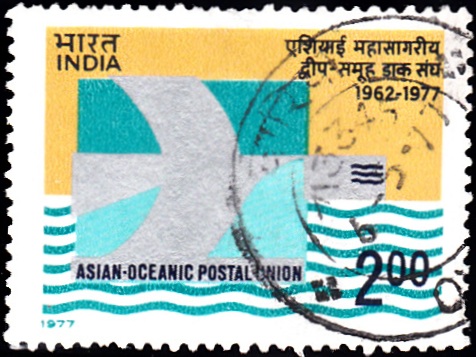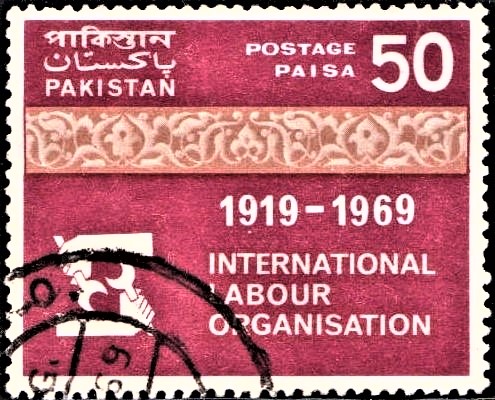
Sibnath Banerjee
A commemorative postage stamp on the birth centenary of Shibnath Bandopadhyay, a doyen of Indian Trade Union movement :
 Issued by India
Issued by India
Issued on Jul 11, 1997
Issued for : Department of Posts is issuing this commemorative postage stamp to mark the birth centenary of Shri Sibnath Banerjee.
Credits :
Stamp, F.D.C. : Based on material furnished by Sibnath Banerjee Centenary Committee.
Type : First Day Cover
Colour : Two
Denomination : 200 Paise
Overall size : 3.90 x 2.90 Cms.
Printing size : 3.50 x 2.40 Cms.
Perforation : 13.5 x 13.5
Paper : Matt Chromo
Stamps Printed : 0.4 Million
Number per issue sheet : 40
Printing Process : Photo–offset
Printer : Calcutta Security Printers Ltd., Kanpur
Name : Sibnath Banerjee
Born on Jul 11, 1897 at Brahman Rangdia, Khulna district, Bengal Presidency, British India [now in Bangladesh]
Died on Feb 16, 1932
About :
- Sibnath Banerjee, a doyen of Trade Union movement in India, committed himself whole-heartedly to the service of the nation and the Indian people. Born on 11 July, 1897 in the village Brahman Rangdia in Khulna District now in Bangladesh, he first got involved in anti-partition movement in Bengal at the age of eight. He directly joined the non-cooperation movement in 1920 while still a student of M.Sc. in Calcutta University. In 1921, he moved to Indore to serve as a teacher in a high school but gave up the profession, again to participate in the political movement.
- In 1922 he became a Minister of the free Government of India in Afghanistan led by Raja Mahendra Pratap. Between 1925 and 1929 he organised trade Union workers in different industries to voice their demands and after the successful culmination of Railwaymen’s strike in 1929, he was imprisoned in Dacca jail and implicated in Meerut Conspiracy case. In 1932, he was elected General Secretary of AITUC and five years later he was elected President of AITUC. He was elected to the Bengal Assembly from the labour constituency of Howrah in 1937 and remained a Member till 1952.
- He suffered imprisonment on a number of occasions during the Quit India movement and more than a decade of life was spent behind bars as a consequence of his participation in the national movement.
- Besides his leadership of the trade union movement he pioneered workers cooperative and led the demand for rehabilitation of leprosy patients and organised other useful social services like eye donation campaign. His wide ranging social activities and specially the leadership of the industrial workers endeared Sibnath Banerjee to many national leaders including Rabindranath Tagore, Netaji Subhas Chandra Bose, Dr. B. C. Roy, Dilip Roy & Dr. Suniti Kr. Chatterjee. Politically he was close to Jayaprakash Narayan, Narendra Dev, Achut Patwardhan & Dr. Ram Manohar Lohia.
- Shri Sibnath Banerjee was the founder of many movements and organisations like Congress Socialist Party, AITUC, Hind Mazdoor Sabha. In 1978, he participated in the Marichjhapi movement in South 24 Parganas for the settlement of refugees displaced from Dandakaranya. After retiring from trade Union activities he devoted himself to social reconstruction programmes and he founded Workers Education Trust. The cause of the working class and interest of the under privileged remained dear to Sibnath Banerjee throughout his life. He passed away on 16 February, 1932.
- Text : Based on material furnished by Sibnath Banerjee Centenary Committee.







